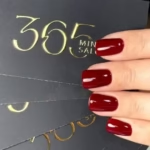Pearl chains have been loved for a very long time because they always look classy and elegant. From the famous earrings that Cleopatra wore to the fashion icons of today, pearls have captivated people for a very long time. This article will discuss the beauty of pearl necklaces, their history, their types, and how they are still worn to display refinement and flair.
The Timeless Appeal of Pearls
Pearls are unique among gemstones. Unlike diamonds, sapphires, and rubies, pearls are not mined from the earth but are cultivated within mollusks. Their organic origin adds to their mystique and allure. The formation of a pearl begins when an irritant, such as a grain of sand, enters a mollusk.
In response, the mollusk secretes layers of nacre, a combination of aragonite and conchiolin, which gradually forms the pearl.
Throughout history, pearls have been prized for their natural beauty and rarity. Ancient civilizations, including the Egyptians, Greeks, and Romans, valued pearls highly, using them as symbols of wealth and power. Cleopatra, the last Pharaoh of Egypt, famously dissolved a pearl in vinegar and drank it as a testament to her opulence.
In the 20th century, pearls regained their popularity, largely due to style icons like Coco Chanel and Audrey Hepburn, who made them a staple in haute couture. Today, pearl necklaces continue to be synonymous with grace, elegance, and sophistication.
Types of Pearls
Pearls come in various types, each with its unique characteristics. Understanding the different types can help you choose the perfect pearl necklace for any occasion.
1. Akoya Pearls
Akoya pearls are perhaps the most well-known and traditional type of pearl. They are primarily produced in Japan and China and are celebrated for their classic white or cream color with a high luster. Akoya pearls are typically round and feature a smooth surface, making them a popular choice for formal and classic pearl necklaces.
2. Freshwater Pearls
Freshwater pearls are cultivated in lakes and rivers, primarily in China. They come in a wide range of colors, including white, pink, lavender, and even blue. Freshwater pearls are known for their versatility and affordability, making them a popular choice for everyday wear. They also come in various shapes, including round, oval, and baroque.
3. Tahitian Pearls
Tahitian pearls, also known as black pearls, are produced in the warm waters of Tahiti. These pearls are renowned for their dark hues, ranging from deep black to green, blue, and even purple. Tahitian pearls have a unique, exotic appeal and are often used to create dramatic and luxurious pearl necklaces.
4. South Sea Pearls
South Sea pearls are produced in the warm waters of Australia, Indonesia, and the Philippines. They are among the largest and most valuable pearls due to their size and rarity. South Sea pearls typically come in shades of white, gold, and silver, and their luxurious luster and size make them a sought-after choice for high-end jewelry.
5. Mabe Pearls
Mabe pearls, also known as blister pearls, are semi-spherical and are cultivated against the inside of the mollusk’s shell rather than within the tissue. They are often used in unique, artistic designs, such as earrings and brooches, but can also be used to create striking necklaces.
Choosing the Perfect Pearl Necklace
When selecting a pearl necklace, several factors come into play, including the type of pearls, the length of the necklace, and the style of the design. Here’s a guide to help you choose the perfect pearl necklace:
1. Pearl Type
As mentioned earlier, the type of pearl significantly impacts the necklace’s overall look and feel. Consider the occasion and personal style when choosing the type of pearl. For formal events, classic Akoya or South Sea pearls necklaces might be the best choice, while Freshwater pearls can offer a more casual and versatile look.
2. Necklace Length
Pearl necklaces come in various lengths, each suited for different occasions and styles:
- Choker (14-16 inches): Sits closely around the neck and is perfect for a modern, chic look.
- Princess (17-19 inches): Falls just below the collarbone, making it a classic choice for both casual and formal wear.
- Matinee (20-24 inches): A versatile length that works well for both day and evening wear.
- Opera (28-34 inches): Can be worn as a single long strand or doubled for a layered effect. Ideal for formal occasions.
- Rope (over 34 inches): Offers endless styling options and is perfect for dramatic and sophisticated looks.
3. Pearl Size and Shape
Pearl size and shape also play a role in the overall design of the necklace. Larger pearls make a bold statement, while smaller pearls can create a more delicate and refined look. Additionally, the shape of the pearls—whether round, baroque, or semi-round—can influence the necklace’s overall aesthetic.
4. Necklace Design
The design of the pearl necklace can vary from simple single-strand pieces to elaborate multi-strand creations. Consider your style and the occasions you’ll wear the necklace. A classic single strand of pearls is timeless and versatile, while a multi-strand or asymmetrical design can offer a more contemporary and unique look.
Caring for Your Pearl Necklace
Pearls are delicate and require proper care to maintain their luster and beauty. Here are some tips for caring for your pearl necklace:
- Keep Them Dry: Pearls are sensitive to moisture. Avoid exposing them to perfume, hairspray, or other chemicals, and always remove your necklace before swimming or showering.
- Clean Gently: Clean your pearls with a soft, damp cloth. Avoid using abrasive cleaners or scrubbing, as this can damage the surface of the pearls.
- Store Properly: Store your pearl necklace in a soft pouch or cloth-lined jewelry box to prevent scratches. Avoid storing pearls with other jewelry that could cause abrasion.
- Restring Regularly: If you wear your pearl necklace frequently, consider having it restrung every few years to maintain its durability and ensure the knots between the pearls remain secure.
Embrace the Elegance of Pearls
Pearl necklaces represent more than just a fashion statement. They are a symbol of sophistication, grace, and timeless elegance. Whether you’re choosing a classic Akoya strand or a dramatic Tahitian piece, a pearl necklace can elevate any outfit and make a lasting impression.





